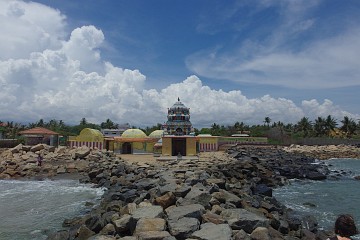Kerala and Tamil Nadu
(vero;2016-May-01)
Chosing pictures of Kerala and Tamil Nadu was not easy. To start with, we did not enjoy Kerala as much as expected and do not have that many “good” shots of this state. Then, for Tamil Nadu, the state of so many temples, we had photos of gopurams, carvings and sculptures galore but thought it might get a bit boring after a while. We hope you will enjoy our selection, a mix of architecture, landscape and street scenes.
Go back to Street Processions or go up to Photos
$ updated from: Photos.htxt Mon 28 Apr 2025 14:55:29 trvl2 — Copyright © 2025 Vero and Thomas Lauer unless otherwise stated | All rights reserved $







































